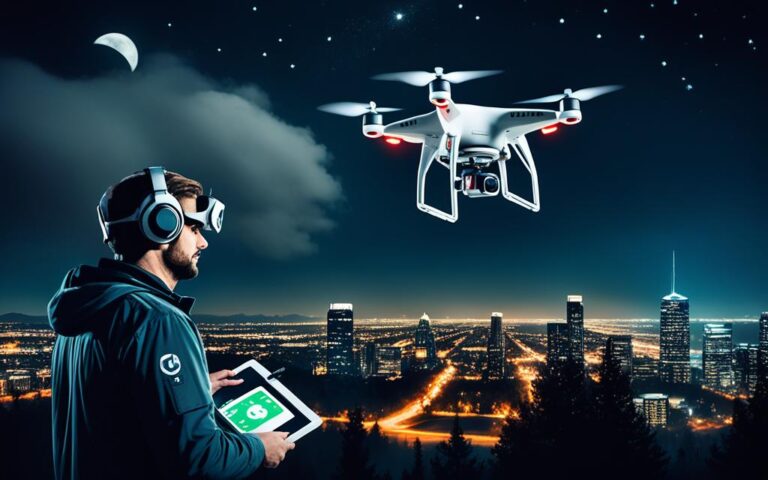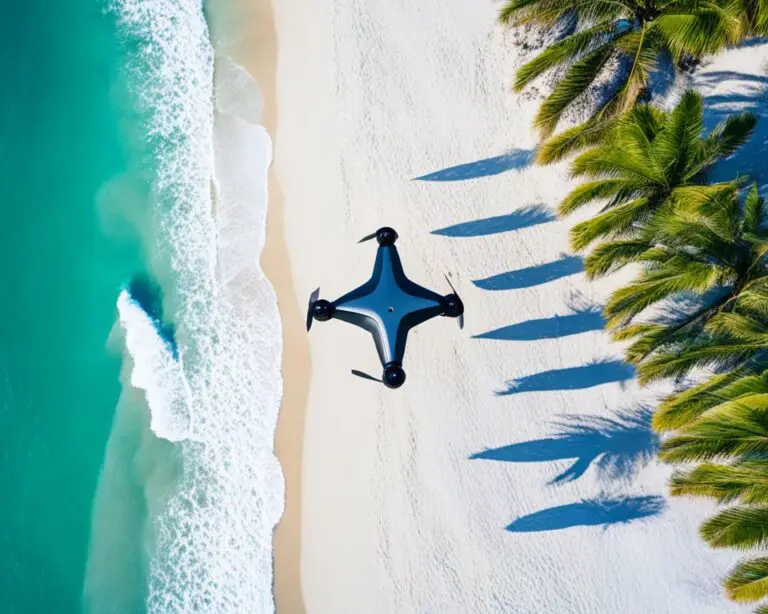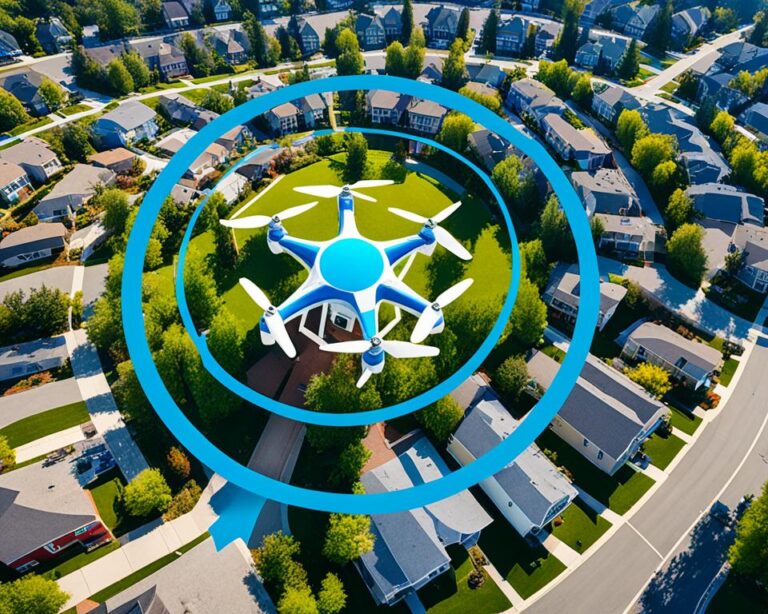Drone Flying Rules 2024: Stay Legal & Safe in the Sky
The freedom to soar amongst the clouds has become an exhilarating reality thanks to the advent of drone technology. However, with this newfound liberty comes the crucial responsibility of adhering to drone flying rules. In the United States, managing a safe drone operation is not only a matter of personal discipline but also of legal obligation. As UAVs increasingly fill our skies, understanding the essentials of legal drone use is paramount for both the novice hobbyist and the seasoned professional pilot.
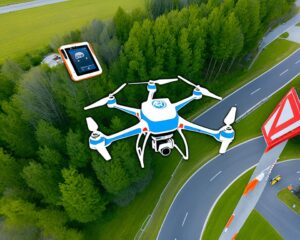
Ensuring that your aerial ventures remain within the boundaries of the law protects not just your own interests, but also those of fellow airspace users and the unsuspecting public below. It is the collective adherence to these regulations that helps prevent incidents, maintain privacy, and promote a harmonious coexistence between drones and manned aircraft. Let’s embark on a journey to demystify the dos and don’ts of drone operation.
Key Takeaways
- Understanding and following drone flying rules are essential for legal and safe drone operation.
- Safe drone operation entails respecting the privacy and safety of others, as well as the integrity of the airspace.
- Legal drone use is regulated by the Federal Aviation Administration (FAA) and adherence is mandatory.
- Drone pilots need to stay informed about current and updated drone regulations to ensure compliance.
- Responsibility, awareness, and education are key to enjoying the freedoms of drone aviation without legal ramifications.
Introduction to Drone Flying Rules and Regulations
The realm of Unmanned Aerial Vehicles (UAVs) has expanded exponentially, placing drone regulations at the forefront of aviation discourse. In the United States, the importance of understanding and following UAV guidelines cannot be overstated for those wishing to engage in safe drone flying. But why do these rules exist? Historically, as drone technology advanced, the need to maintain the safety of national airspace while protecting individuals’ privacy and security became evident. Hence, a structured set of guidelines was developed.
The evolution of these regulations has been dynamic, adapting to the burgeoning number of drones in the sky. The impending drone flying rules 2024 updates signal a continued commitment to this evolution, reflecting advancements in drone capabilities and broader use cases. These regulations have one primary objective: to ensure the safe coexistence of drones with other aircraft and the safety of people on the ground.
To this end, the regulations have been tailored to different types of drone pilot designations, each with its set of rules. For instance, commercial drone operations are bound by more stringent requirements than those for recreational flyers. These distinctions are crucial in maintaining order and safety within a rapidly diversifying field.
The scope of drone regulations is vast, covering everything from flight altitudes and times, to proximity to airports and other sensitive areas. As we move forward, it is increasingly important for both current and prospective drone pilots to understand the breadth and depth of these guidelines. Doing so ensures not only legal compliance but also the continued advancement of the drone industry as a model of innovation and safety.
With this foundation, we can look ahead to Section 3, which will dive into the specifics: the Federal Aviation Administration’s (FAA) pivotal role in enforcing these regulations and facilitating safe drone flying practices. The upcoming section will elucidate the intricacies of the FAA’s regulations, distinguish between different pilot requirements, and elaborate on how airspace is managed for both recreational and commercial drone use.
Understanding the FAA’s Role in Drone Aviation
As drones become increasingly integrated into national airspace, the Federal Aviation Administration (FAA) emerges as the pivotal body regulating this burgeoning sector. Understanding the scope and intention behind FAA drone regulations is fundamental for safe and legal UAV operation.
What the FAA Regulates in Drone Flying
The FAA’s mandate extends across several operational essentials to maintain a safe environment for both manned aircraft and UAVs. The core regulations address safety standards which include, but are not limited to, altitude restrictions, no-fly zones, and drone pilot conduct during flight. The FAA drone operational airspace guidelines play a crucial role in mitigating potential conflicts within the skies.
Registration Requirements for Drone Pilots
All drone pilots are required by the FAA to undergo a registration process before taking off. This is an integral step that facilitates accountability and promotes a culture of responsibility amongst operators. Whether you fly for hobby or business, your drone needs an identification number, and pilots must have proof of drone pilot registration on their person during flight.
To register a drone, operators must submit their personal details and the specifications of their UAV to the FAA’s DroneZone. Pilots must be at least 13 years old to register and must renew their registration every three years. The process not only adds to the national database but also educates pilots on their responsibilities and the mandatory guidelines necessitated for airworthiness.
FAA-Approved Airspace for Drone Operations
Navigating the complexities of national airspace presents a unique set of regulatory challenges. The FAA demarcates sections of the sky where UAVs are allowed to fly, and these areas are labeled as drone operational airspace. To assist drone pilots, the FAA provides the B4UFLY mobile application, which helps in identifying the status of the airspace in your region.
For detailed understanding, here is a summarized depiction of airspace classifications:
| Class | Description | Access for UAVs |
|---|---|---|
| A | Controlled airspace at high altitude (18,000 feet and above). | Not typically accessible for drones. |
| B | Surrounds the busiest airports; requires ATC clearance. | Requires specific authorization for drone operations. |
| C | Covers airspace around airports with operational control towers. | Drones may operate with prior authorization. |
| D | Encloses airports with control towers; less busy than B and C. | Possible with authorization. |
| E to G | Includes all other controlled and uncontrolled airspace. | Generally accessible for drones, with some restrictions in E. |
It is every drone pilot’s responsibility to ensure they are flying in FAA-approved zones, as non-compliance can result in legal consequences and endangerment of other aircraft, wildlife, and people on the ground.
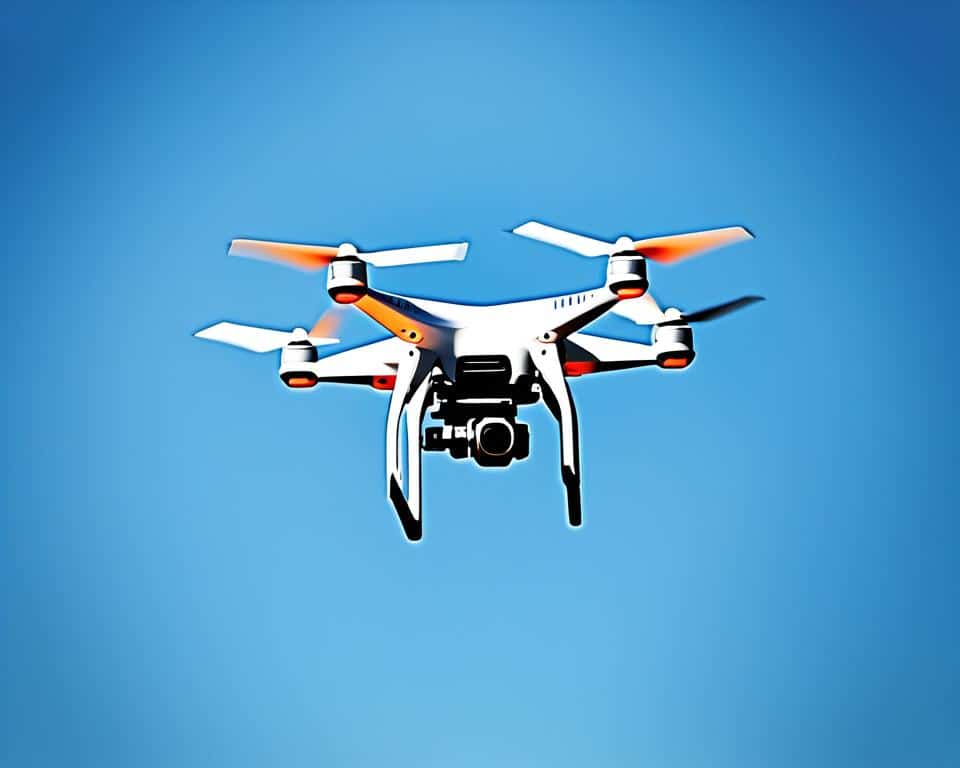
Drone Flying Rules for Recreational Pilots
Flying a drone as a hobby can be both thrilling and rewarding. With the landscape of recreational drone flying continuously evolving, it is vital for enthusiasts to stay abreast of the latest hobbyist drone rules. These regulations ensure safe skies for everyone and protect the rights of individuals on the ground. This section will delve into the current rules for personal UAV operation, providing you with the knowledge to fly responsibly and legally.
One prime consideration for domestic drone pilots is the distinction between recreational and commercial drone use. For those flying purely for enjoyment, without any financial compensation, hobbyist guidelines apply. Regulations may include limits on where you can fly, how high you can go, and which drones are suitable for personal use. Let’s examine the specifics:
- Drone Registration: All recreational drones weighing between 0.55 pounds (250 grams) and 55 pounds (25 kilograms) must be registered with the Federal Aviation Administration (FAA).
- Know Before You Fly: Familiarize yourself with airspace restrictions and local ordinances before flying. The B4UFLY app is a valuable resource for this information.
- Avoid Restricted Areas: Steering clear of no-fly zones such as airports and military bases is non-negotiable.
- Keep It In Sight: A drone should always be within your visual line-of-sight to ensure control and prevent accidents.
- Yield to Manned Aircraft: It is crucial to give way to all manned aviation. Your recreational activity should never interfere with pilot operations.
- Altitude and Speed Restrictions: Most recreational drones are limited to an altitude of 400 feet above ground level and a maximum speed of 100 mph.
The implementation of the latest drone flying rules 2024 could see changes that may affect the way hobbyists enjoy their drones. Keeping up with these updates is essential for any drone enthusiast. For the most current information, always refer to the FAA’s website or consult drone community forums where many experienced pilots share insights and tips.
For your convenience, below is a comparative overview of some key differences between the rules for recreational and commercial drone pilots:
| Criteria | Recreational Pilots | Commercial Pilots |
|---|---|---|
| FAA Registration | Required for drones over 0.55 lbs | Required for all drones |
| Purpose of Flight | No compensation allowed | For hire operations allowed |
| Altitude Limit | Typically 400 feet | 400 feet or waiver required |
| Distance from Airports | Five miles without airport notification* | Must have airspace authorization |
| Testing | Not required | Part 107 certification required |
| Safety Guidelines | Follow community-based guidelines | Must adhere to Part 107 rules |
*Note that the distance rule is subject to change with upcoming regulations and should always be verified for the most recent update.
As you embrace the freedom of recreational drone flying, always do so with respect for the hobbyist drone rules designed to protect you and those around you. With attention to the rules and guidelines for personal UAV operation, you’ll be able to enjoy the wonders of drone flight while contributing to the safety and integrity of the airspace.
Drone Flying Rules
As drone technology continues to advance and recreational drone use grows, it is ever more critical to follow a rigorous approach to flight preparation and adherence to aviation standards. Whether you’re a first-time flyer or have numerous flights under your belt, understanding the pre-flight checklist, visual line of sight practices, and drone night flying regulations is crucial to a safe and enjoyable flight.
Pre-Flight Checklist: What to Do Before Takeoff
A meticulous pre-flight checklist is vital in ensuring your drone operations do not jeopardize your safety or that of others. This checklist serves as a reference to prevent oversight and confirm that your drone is prepared for the venture ahead.
- **Battery Check**: Confirm that all batteries, including the drone’s primary battery and the controller’s, are fully charged.
- **Inspect Drone Condition**: Look over your drone for any signs of damage or wear that may affect its operation.
- **Propeller Inspection**: Ensure propellers are secure and undamaged.
- **Firmware and Software Updates**: Check for the latest software updates for your drone’s operating system.
- **Weather Check**: Review the weather conditions and forecasted changes that may affect flight.
- **Calibrate Sensors**: Calibrate the drone’s compass and GPS sensors to ensure accurate flight controls.
- **Communication Setup**: If applicable, set up communication methods for any observers or spotters assisting you.
Best Practices for Maintaining Visual Line of Sight
Maintaining a visual line of sight with your drone is not just a rule to abide by; it’s a fundamental aspect of drone safety and control. Here are the prime practices to keep your drone within sight:
- **Daytime Operation**: Whenever possible, operate your drone during daylight to ensure the best visibility.
- **Use Spotter Assistance**: If available, employ the aid of an observer to maintain an additional viewpoint on the drone’s location.
- **Limit Altitude and Distance**: Stay within the recommended altitude and distance limits to keep your drone visibly clear.
- **Avoid Distractions**: Focus on your flying and steer clear of potential distractions that might cause you to lose sight of your drone.
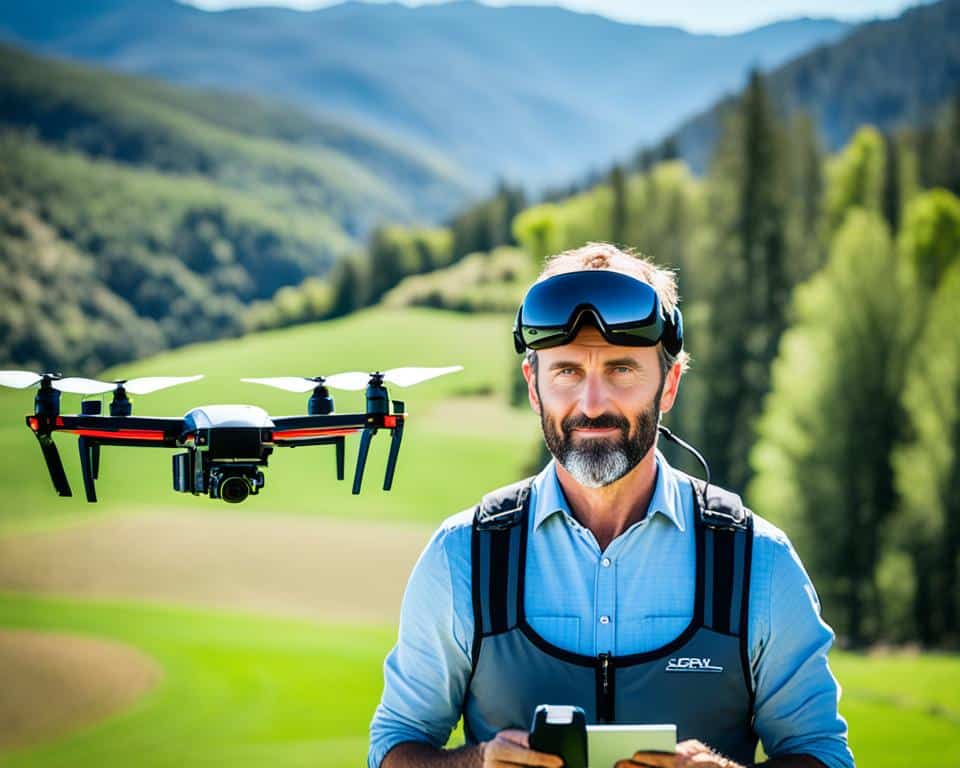
Night Flying: Special Regulations and Guidelines
Flying a drone at night introduces additional challenges and thus is subject to drone night flying regulations. The precautions and equipment required for night operations are put in place to augment safety and visibility for the drone operator and others sharing the airspace.
- **FAA Registration**: Ensure your drone is properly registered with the FAA for night flight operations.
- **Anti-Collision Lights**: Equip your drone with anti-collision lighting that is visible for at least 3 statute miles.
- **Pilot Training**: Complete any required training or obtain necessary waivers and permissions for night operations.
- **Heightened Awareness**: Be even more vigilant of obstacles and potential risks that may not be as apparent during the day.
Adhering to these regulations is essential for all pilots seeking to take to the skies after dusk. Stay informed and prepared to ensure a successful and legal night flight experience. Remember that while night flying may present an appealing new perspective, it comes with an increased responsibility for safety and compliance.
Conclusion
As we have seen throughout this exploration of drone flying rules, compliancy in drone flying is critical for the safety and collective enjoyment of operating UAVs. The regulations established by the FAA are in place to maintain order and safety in our skies, and as responsible drone pilots, it is our duty to adhere to them. From the in-depth discussion on rules specific to recreational and commercial piloting to the technical nuances of navigating airspace, each segment of knowledge contributes to the overall framework of responsible drone operation.
While burgeoning technology brings excitement to the field of aviation, it also necessitates a commitment to updating UAV knowledge. This pursuit of education is not a one-time endeavor but a continuous responsibility. The anticipated drone flying rules 2024 changes serve as a timely reminder of the dynamic nature of drone legislation. Staying informed of such updates ensures that your UAV endeavors—be they for leisure or business—are both legally compliant and aligned with best practices for safety.
In closing, the joy and utility drones provide are matched by the importance of flying them responsibly. Embrace the advancements in this field with an informed and conscientious approach. Whether mapping new vistas, capturing breathtaking photography, or utilizing UAVs for innovative services, let us all contribute to a culture of safe and compliant drone piloting. Keep soaring to new heights, but remember, an updated understanding of the rules keeps our skies friendly for all.

